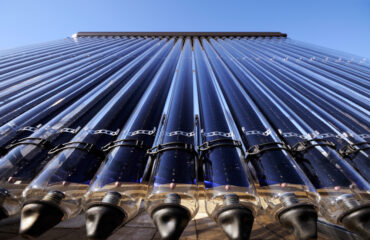
Installing pool solar panels can often be complicated, especially if you’re not familiar with the materials used and the process of installing one. If you are looking for a simple DIY solar pool heater panel installation guide, this article may assist you.
Solar Panel Installation
Heating pool water with unglazed, inexpensive plastic pool solar panels can be relatively easy and affordable. Although they are less efficient than high-cost pool solar panels, these black plastic panels do not require too much energy to manufacture and transport heat than other solar panels that use copper, steel, glass, or aluminum.
Step 1: Consider the climate and get necessary permits. Since you will be using plastic pool solar panels, you want to consider how cold it is going to get in your area during different seasons. If you want to extend your swimming season, you most likely need to supplement the pool solar panels with gas heating during colder months.
If you’re installing on the roof, you will first need to comply with codes, submit drawings and obtain a permit.
Step 2: Install a 3-way pool valve. The valve is what directs the water to the panels or to the swimming pool. Install a pool valve that can accept an automatic controller so you can later on control it remotely or with a timer.
Step 3: Install a T pipe fitting. Installing the fitting near the valve will allow water to reenter the return line and go back to the pool.
Step 4: Maintain a pipe size of 1-1/2″ or 2″ for both lines to and from the panel location. If the panels are on the roof, securely fasten the pipes to the wall with plastic conduit hangers.
Step 5: Install at least 2 solar panels. Plastic solar panels have varying sizes, but the most common is 2’x20′. You can install more if the budget, space, and pump power permits, but keep your expenses modest until you’re convinced that its benefits are worthwhile.
Step 6: To hold the panels in place, use stainless steel hanger bolts. Dab generous amounts of roofing polymer around each bolt to prevent leaks. If fastening the panels on the roof is a challenge, placing them on the ground will do. Make sure the panels are not installed backwards to avoid trapping air in.
Also, pay close attention to the IN and OUT of the panel pipe. If the panel is installed on a slope, its OUT end should be higher.
Step 7: Connect the pool solar panels together and to the union fittings once they are fasted in place.
Step 8: Once the pipes are all connected, test the DIY solar pool heater for any leaks by opening the valve and turning on the pump. Hopefully you won’t find any, and the system will work just fine. In theory, the panels are more efficient if the water flow is greater.
Do you have questions? Call Arizona Accurate for any solar installation concerns or let us know through the comments.


